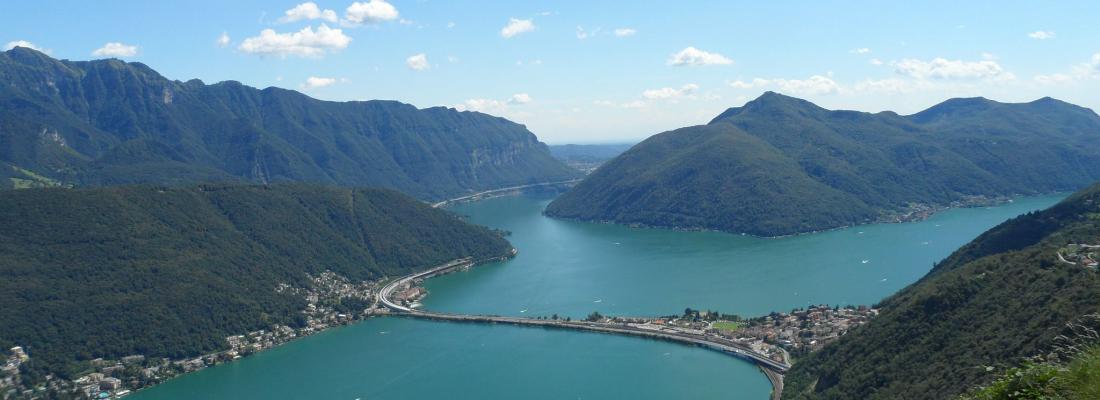Climate change and risks Reading time 3 min
Widespread decline of oxygen in lakes caused by climate change
Published on 03 June 2021

Although they only cover 3% of the world’s land surface, lakes are habitats for diverse species, including endemic taxa, and are valuable resources that provide humanity with many ecosystem services. Smaller than seas and oceans, they react more rapidly to the effects of environmental changes. They thus represent excellent sentinels for the impacts of climate change on ecosystems. For this reason, an international team from the Global Lake Ecological Observatory Network (GLEON) ** conducted a study based on more than 45,000 samples of water from 400 lakes in temperate regions of the globe, mainly in North America and Europe; the oldest samples dated from 1941 and the most recent from 2019. INRAE contributed by supplying data from its Alpine Lake Observatory, OLA. The scientists analysed temporal trends on oxygen dissolved in surface and deep waters in addition to temperature profiles and analysed causes of change in oxygen fluctuations.
An overall decline of lake oxygen levels since the 1980s
The results showed an overall decrease in oxygen in lakes since 1980. Oxygen conditions in the lakes studied have decreased by an average of 5.5% in surface waters and 18.6% in deep waters. These rates of decline are 3 to 9 times faster in lakes than in oceans. The main driver of oxygen losses in surface water was attributed to the global rise in water temperatures, which caused a reduction in oxygen solubility in waters. With the rise in atmospheric temperatures since 1980, the overall temperature of lake surface waters increased by 0.38°C per decade, while oxygen concentrations decreased by 0.11 mg/l per decade. In deep waters, temperatures remained relatively stable but the rise in surface water temperatures increased the difference in density with deep waters, thus hampering the mixing of waters from different lake strata and hence the renewal of oxygen in deep waters. It is this increase in thermal stratification in terms of both intensity and duration that led to a decrease in oxygen conditions in deep lake waters.
A positive feedback loop for eutrophication and a risk for increasing greenhouse gas emissions
Dissolved oxygen is a fundamental parameter of lakes that regulates numerous characteristics of the ecological quality of waters. Most complex life in lakes, such as fish, needs well oxygenated conditions. However, poor oxygen conditions can favour micro-organisms, such as certain bacteria that produce methane, a strong greenhouse gas. A decrease in oxygen conditions can also increase the release of pollutants from sediments such as metals and nutrients such as phosphorus, which in turn induce major changes in aquatic community structure of waters and foster eutrophication phenomena***.
Rapid changes observed in lakes in recent years provide new evidence of the effects of climate change on ecosystems on a global scale. Based on these observations, INRAE’s OLA Observatory is currently developing models to assess and forecast oxygen conditions in lake ecosystems in order to support their management.
|
Reference Jane, S.F., Hansen, G.J.A., Kraemer, B.M. et al. Widespread deoxygenation of temperate lakes. Nature 594, 66–70 (2021). DOI: https://doi.org/10.1038/s41586-021-03550-y |
|
RESULTS WHICH CONFIRM A LONG-term trend
In 2016, two studies based on sediment archives from lakes in Europe and throughout the world, conducted by the National Institute for Scientific Research in Quebec and involving INRAE, demonstrated that lakes were tending to lose their oxygen because of rises in nutrient release. These nutrients were notably due to an increase in human pressures, particularly in Europe following an increase in urban areas. This new study shows that during recent decades, climate change and rising temperatures have become the principal causes of lake deoxygenation, while the historical cause was the increase in nutrient supplies from watersheds. The question is now to determine how these two pressures (climate and nutrients) interact, and whether residual concentrations of phosphorus (nutrient elements for micro-organisms) in lakes and inherited from the 1950s in Europe, might amplify the impacts of climate change. These issues are currently being addressed by modelling, using data from sediment archives (long time scale) and the monitoring of lakes (recent data and the seasonal monitoring of lake waters).
|
* A biogeochemical cycle is the process that concerns the transport and cyclical transformation of an element or chemical compound between the main reservoirs which are the geosphere, atmosphere and hydrosphere, in which the biosphere is situated.
** Le Global Lake Ecological Observatory Network (GLEON) is formed of a voluntary international network of scientists which aims to understand, predict and communicate on the role and responses of lakes to global environmental changes. The GLEON draws strength from more than 60 lake observatories worldwide, with more than 850 members from 62 countries. https://gleon.org/
***Imbalance of aquatic ecosystems triggered by an excessive input of nutrients, often of human origin. The best known indicators are the appearance of toxic cyanobacteria in lakes and water courses, and macroalgal blooms in coastal regions.
